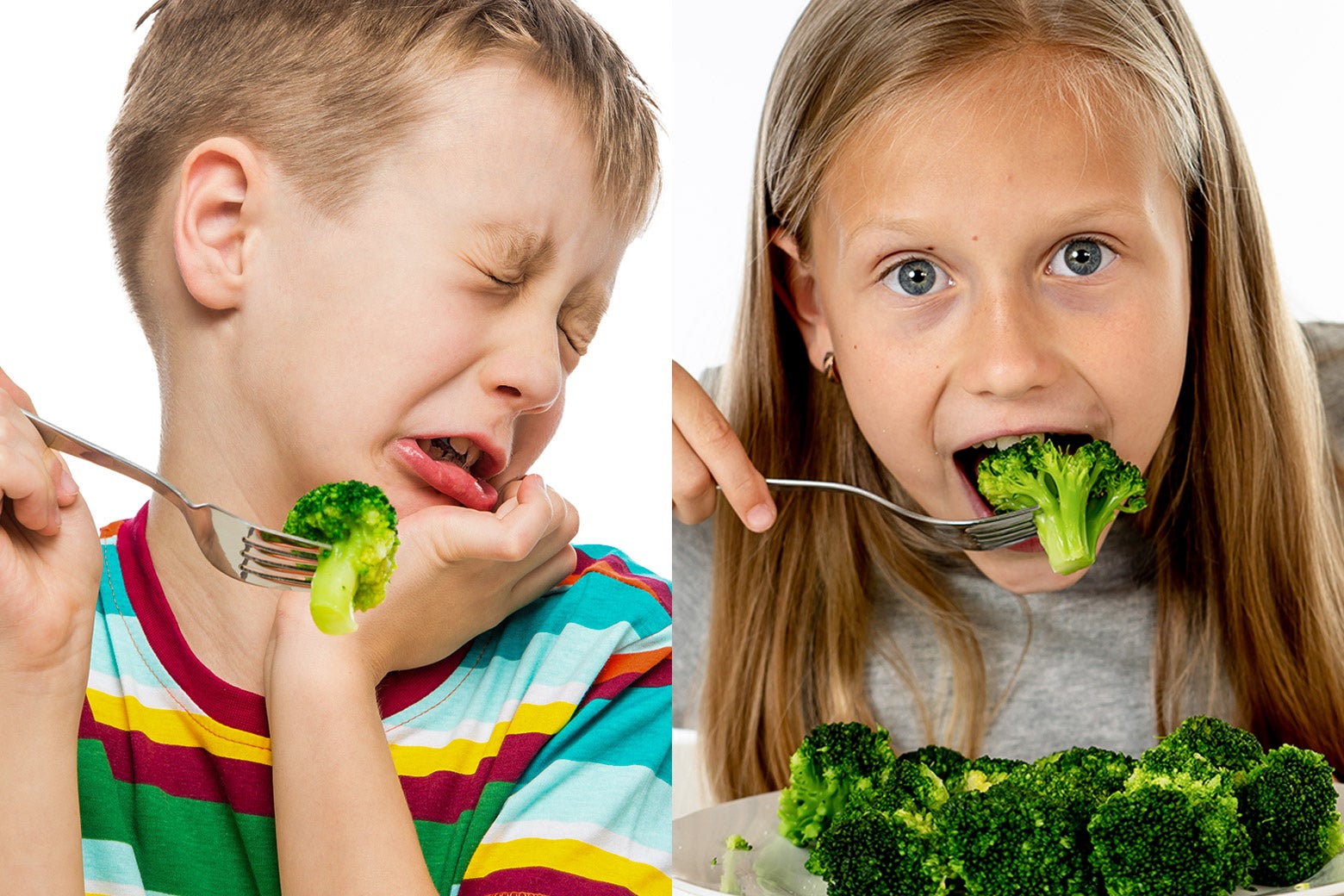Sign up for the Slatest to get the most insightful analysis, criticism, and advice out there, delivered to your inbox daily.
I squeeze my bike into the last spot on the rack as cars circle the parking lot. As I walk through the automatic doors, I feel that familiar whoosh of forced air. I’m finally at my local Trader Joe’s. Grabbing a red plastic basket, I try not to get distracted by the plants that I don’t have space for and would likely forget to water. I’m here on a mission: to stock up on the ultraprocessed foods that will get me through the week. From the pasta sauces to the premade salads with their plastic packets of dressing to the frozen stir-fry mixes to the delicious dumplings to the oat milk for my coffee, TJ’s can take all of my grocery money in exchange for making my life much easier.
Ultraprocessed foods are having a moment in the spotlight once again. The first week of the year felt very much like Ultraprocessed-Food Awareness Week. The New York Times provided us with “The Well Challenge: 5 Days to Happier, Healthier Eating.” It started off with a quiz to help us identify which foods in our grocery cart are ultraprocessed. It was enlightening … if a bit confusing. We learned that Häagen-Dazs vanilla ice cream is not ultraprocessed, because it contains just five ingredients that we probably recognize. Turkey Hill French vanilla ice cream, on the other hand, is ultraprocessed, due to its artificial flavors, colorings like Yellow 5, and an emulsifier called cellulose gum (aka carboxymethylcellulose, if you’d like it to sound even scarier).
In the same week, the Washington Post offered us a resource for choosing the healthier versions of ultraprocessed sliced bread, peanut butter, chicken nuggets, Greek yogurt, and cold cuts. And the New Yorker ran a lengthy feature titled “Why Is the American Diet So Deadly?” Its focus was, of course, ultraprocessed foods. The message is coming in clear: We’ve got to closely examine what we’re eating.
I started looking into what makes a food ultraprocessed in the summer of 2023. At that time, U.K. celebrity doctor Chris van Tulleken was capturing attention for an experiment he did for his book Ultra-Processed People: The Science Behind Food That Isn’t Food. In it, he details a month of his life getting 80 percent of his diet from ultraprocessed foods, an attempt to replicate the amount that shows up in the average British diet. After van Tulleken ate a variety of fast food, frozen meals, and sugary cereals for 30 days, he reported poor sleep, anxiety, sluggishness, constipation, and feelings of unhappiness. He generalized his experience, suggesting that any diet high in ultraprocessed foods would have the same outcome. U.K. and U.S. media outlets ate it up. NPR ran a photo of van Tulleken spooning flakes from a humongous bowl of cereal. On BBC, he stood next to a giant pile of salty and sweet treats, with a few boxes of veggies placed to one side for contrast. Men’s Health magazine featured a photo of van Tulleken, disembodied hands aggressively smashing store-bought bread into his grimacing face.
To me, this all seemed overly dramatized and incredibly reductive. As a dietitian, I regularly see the analysis paralysis in my patients that comes with trying to integrate the latest urgent-sounding advice on what not to eat, and this stuff about ultraprocessed foods was no different. My patients started examining ingredients and understandably had questions about whether they could continue with their almond milk lattes and veggie burgers. So I decided to find out for myself what it would look like to eat a diet purposefully loaded with ultraprocessed foods. That September, I set out to replicate van Tulleken’s experiment.
What counts as an ultraprocessed food? It can be hard to say. I took the NOVA Food Classification System rubric to a chemical engineer who manages the food processing plant used for teaching and research at the University of California, Davis. The two of us looked at the printouts and attempted to clearly delineate what made a food Category 4 (ultraprocessed) and not Category 3 (processed). We found the categories to be squishy; placing a food in one or the other was something of a judgment call, with experts often disagreeing about what foods fall into which category. (In the NOVA classifications, ice cream is specifically listed as an example of a Category 4 ultraprocessed food, but according to the Times quiz last week, that isn’t always the case. This isn’t an error on the anyone’s part but rather an illustration of how fuzzy this all is.) From what the engineer and I determined, the NOVA classifications put Forager Project’s organic cashew yogurts, Oscar Mayer hot dogs, Olipop, infant formula, Kraft Mac and Cheese, and the supplement AG1—touted by wellness influencer Andrew Huberman—all in the category of ultraprocessed foods.
For the month, 80 percent of my diet came from ultraprocessed foods, as best I could define them. But while van Tulleken purposefully swapped snacks like nuts for chips, I didn’t make any nutritional compromises with my diet. I ate that cashew yogurt, as well as Aidells Chicken and Apple sausage, soyrizo (a vegetarian dupe of chorizo), protein shakes, gluten-free bread, and countless Trader Joe’s and Costco snacks and premade meals.
At the end of my experiment, I actually felt better than I had before. I went from skipping lunch during the week, because Sunday Jessica had had no interest in meal prep, to having meals and snacks full of veggies and protein at the ready. I didn’t have decision fatigue over what to cook, because everything took five minutes or less to get onto my plate. What’s more, it all tasted good. It was easy to grab an ultraprocessed main course and add some fruit and vegetables on the side. I didn’t need afternoon naps anymore, and overall, my anxiety was lower. Most important to me, my spouse noticed that I was more pleasant in the evenings.
Yes, in theory, it would be great to have my breakfast, lunch, dinner, and snacks come from unprocessed or minimally processed foods. I think we can all agree that a pasta sauce made on the stove from the tomatoes, basil, oregano, and rosemary we have grown in our garden would probably taste better than Trader Giotto’s Tomato Basil Marinara. And I wish we could all live in a reality that accommodated that. But many of us are working far more than 40 hours a week, sometimes in multiple jobs, with long commutes and swing shifts just to pay our bills and manage our student loan debt. The time one has to cook a meal is often infinitesimal, and if we need to wash, cut, season, and cook a vegetable, it simply might not happen. And that’s where Trader Joe’s Asian Style Vegetables, with the ultraprocessed stir-fry sauce, comes in for me. (I doubt my life would improve if I came home after a hard day at work and ate unseasoned veggies, without help from delicious prepackaged toppings.) Surprisingly, I don’t think my stance on nutrition is different from that of the media’s Ultraprocessed-Food Awareness Week. On Day 5 of the Times’ Well Challenge, the concluding recommendation was: “add produce to your plate.” An overarching concern is that Americans are choosing ultraprocessed foods instead of nutritious ones. Yet, in many cases, they can be one and the same.
Here’s what I learned from my experiment and the media coverage since: Ultraprocessed food is a long, science-y term for something with a squishy definition. It doesn’t indicate nutritional value, but it looks really fancy in print. Eating nothing but fast food and chips and cookies will likely make you feel bad, but that’s not news. I think most people can get by in the grocery store not by becoming food scientists and stressing over every ingredient—as though any of us need one more thing to stress over!—but by following the basics of nutrition, trying to get protein and produce onto our plates as best we can.
I will keep eating ultraprocessed foods, as will the majority of people. I will stash a couple of protein bars in my purse and store Trader Joe’s meals in my freezer. I will also continue to eat fruit and vegetables straight from the produce section, buy salmon from the deli counter when I can afford it, and try to drink enough water. I look forward to a society that supports us all affording and eating minimally processed food, and in the meantime, I will eat my Trader Joe’s Eggwich in peace.


















